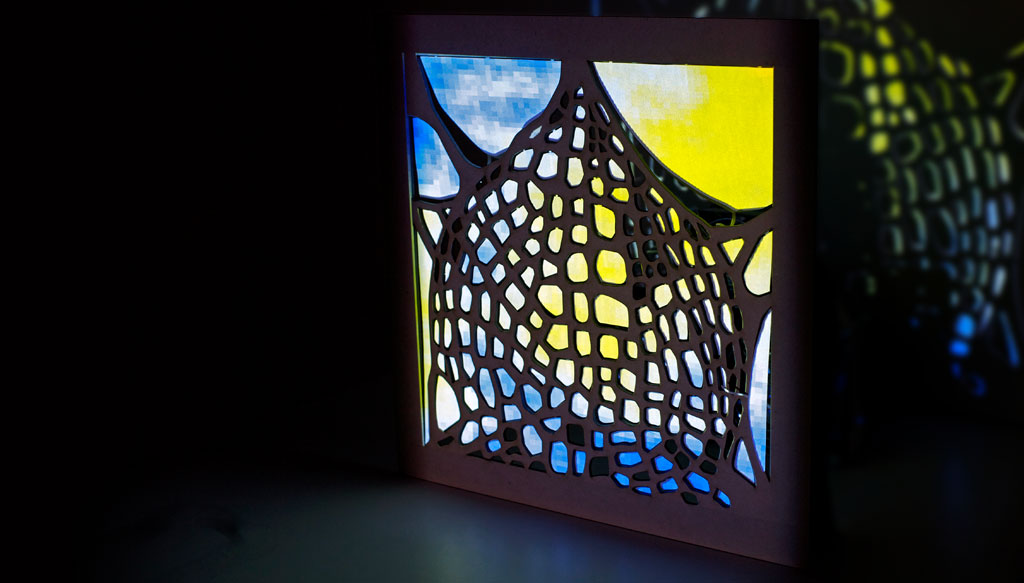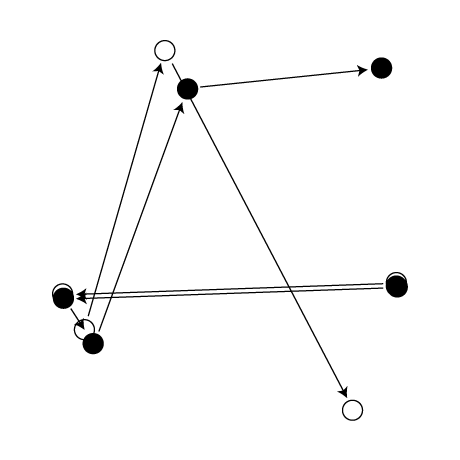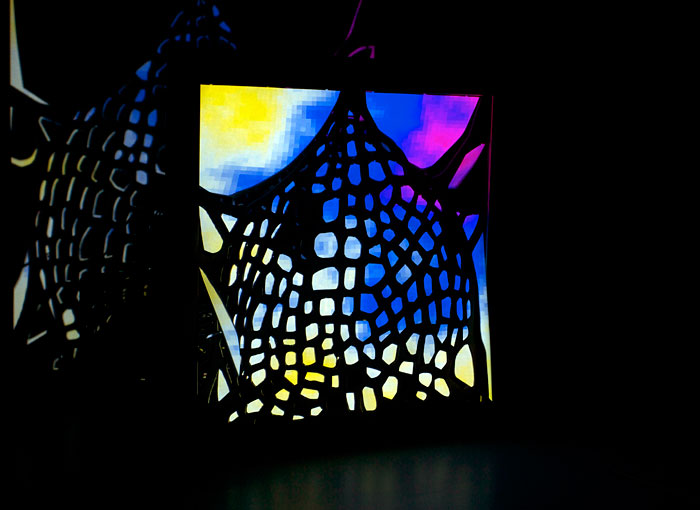
Dendrochaoticism
- Context:
- Academic
- Date:
- Launch:
“The universe is made of stories, not atoms.” — Muriel Rukeyser
This bio-electronic tree interprets chaotically-encoded messages in wind patterns. How might incorporating the biological into computational systems allow interpretation of information that is otherwise undecodable?
Brief
Invent a compelling new hybrid something which is the result of an engineered interplay between a computational system and a dynamic material structure—biological or otherwise.
This project builds from the initial Pixels, Screens, Surfaces project.
Concept
Chaos theory studies the behavior of dynamical systems that are highly sensitive to initial conditions. Small differences in initial conditions yield widely diverging outcomes for chaotic systems. This happens even though these systems are deterministic, meaning that their future behavior is fully determined by their initial conditions, with no random elements involved.^1^
It is more popularly known by the idea that a butterfly flapping its wings in the Amazon might set off a Tornado in Texas.
The video above shows a model of the microscopic structure of the leaf of a bio-electronic tree that interprets chaotically-encoded messages in wind patterns. Its leaf is made up of a reticulated vein structure from which small areas of the leaf, or leaflets, are suspended, free to move in the wind. These leaflets are a variety of sizes and so sit at different angles in the same breeze, causing them to photosynthesize at different rates.
^1^ Chaos Theory entry on Wikipedia

The map defined by x → 4 x (1 – x) and y → x + y if x + y < 1 (x + y – 1 otherwise) displays sensitivity to initial conditions.

The model shows the tessellating leaflets at a microscopic level suspended from the vein structure.
We see the colors of a heat map of photosynthesis levels occurring within the leaflets over the course of a day.
Decoding Chaos
The leaf’s matrical structure breaks the wind down into its constituent vectors aiding the decoding process. The varying levels of organic compounds produced in the leaflets are then fed back to the tree’s primary trunk, where they are continually mapped in its internal rings.
These rings can then be read and interpreted by trained dendrochaotisists, who harvest the ‘stories’ of each constituent part of the wind at that moment. One particular breeze, for example, might contain elements that were caused by an Amazonian butterfly’s flutter towards a flower, a Parisian’s sneeze as he reads the morning paper with a coffee and croissant, the slamming of a door after a heated argument in a Fijian home and the frenzied typing of a California student as he finishes the final page of his dissertation.

Fans behind the model simulate the flow of wind through its leaflets.
Fractals & Chaos
The natural structure of the leaf is based on a fractal structure, which shares a common mathematical root with chaos theory. I am speculating that because both the encoder (wind) and decoder (leaf) share these formational properties, this might allow for decoding that is currently impossible with computer modeling alone.
Might incorporating complex natural structures or systems into our computational systems allow us to perform calculations that wouldn’t otherwise have been possible?

Photosynthesis heat map
Reflections
Due to the brief nature of this project, there were a couple of elements of the model that I would have liked to develop further:
- Being more intentional about using actual computational fractals to form the vein structure of the leaf.
- Designing a more complex logic for the color shifting in the heat map or perhaps exploring other forms of data representation that might augment the model.
- Adding responsive patterns within the vein skeleton to show the transmission of chemical information between the micro-system of each leaflet.
The conceptual elements of this project—exploring chaotic systems and how chaos can be design into order (and vice versa)—feels like a really rich area for potential further investigation. How might computational systems be explored through ecology/biology? What experimental research might take this line of enquiry further?